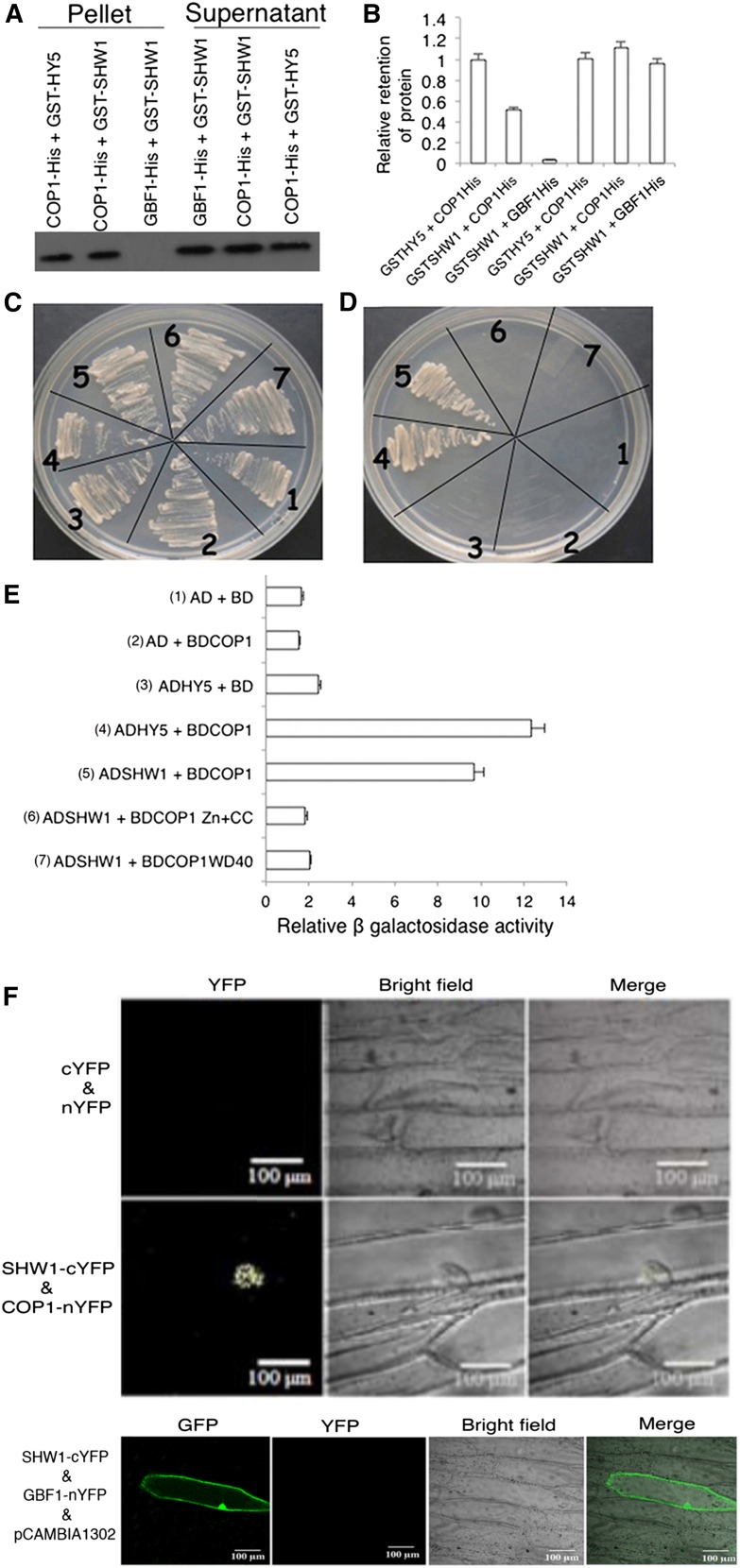Figure 1.
SHW1 physically interacts with COP1. A, In vitro binding of SHW1 and COP1: 2 µg of COP1-6His or GBF1-6His (negative control) was bound to Ni-NTA beads, washed, and incubated with GST-SHW1 or GST-HY5 (positive control). Beads were washed and fractionated in 12% (w/v) SDS-PAGE. The blot was probed with anti-GST antibodies. B, Quantification of the data (by Bio-Rad multi-imager): retention of GST-SHW1 and GST-HY5 by COP1-6His or GBF1-6His is shown in the graph. Error bars indicate sem of three replicate experiments. C to E, Yeast two-hybrid interactions between SHW1, COP1, and the truncated versions of COP1. Growth of cotransformed yeast AH109 strain on double-dropout media (C) and quadruple-dropout media (D). The protein-protein interactions were examined by β-galactosidase assays. The relative β-galactosidase activities were calculated according to Clontech instructions (E). The error bars indicate se (n = 3). The numbers 1 to 7 refer to the constructs used. F, BiFC assay showing that COP1-nYFP and SHW1-cYFP interact to form a functional YFP in the nucleus, whereas SHW1-cYFP and GBF1-nYFP do not interact. GFP containing pCAMBIA-1302 vector was used as a control for transformation. The images show transiently transformed onion (Allium cepa) epidermal cells.

